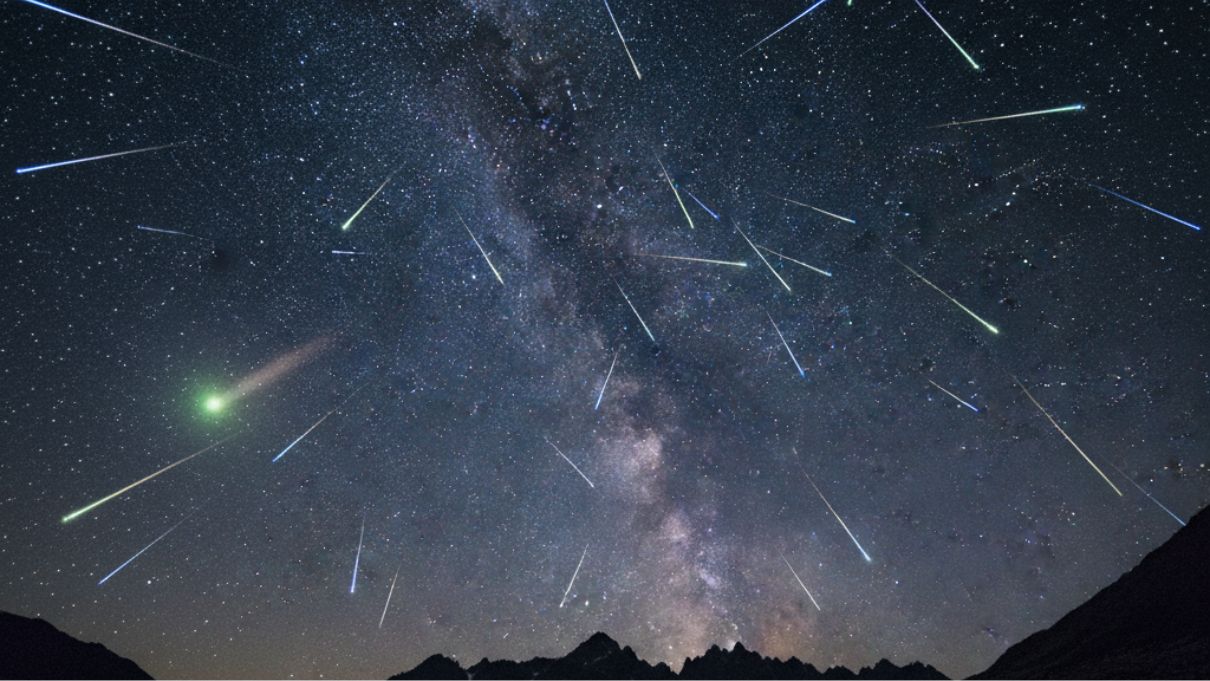Truth & Goodness
4,000 Space Mirrors Could Light Up Earth. Is It Day or Disaster?
04 December 2025

An extraordinary cosmic spectacle is underway. Comet Lemmon, along with two other comets—SWAN and ATLAS—will appear in the sky. Simultaneously, the Orionid meteor shower will peak, meaning you can see shooting stars, comet tails, and a green glow in space over the course of a few October nights. This is the best time of year to watch the sky.
The biggest star of the upcoming cosmic show will be Comet Lemmon (C/2025 A6)—a freshly discovered visitor from the outer reaches of the Solar System. It was first noticed in January 2025 at the famous Mount Lemmon Observatory in Arizona. On October 21, it will be closest to Earth, making it the best moment to see it with your own eyes.
This is a non-periodic comet—it may never return to Earth’s vicinity. In the sky, it will appear as a greenish object with a faint tail, slowly moving against the backdrop of stars. Its brightness is estimated at around +6.1 mag, meaning it will be visible even to the naked eye under good conditions.
Comet Lemmon will be visible on October 21 after dusk, low above the northwest horizon, near the constellation Ursa Major (the Big Dipper). All you need is a dark location away from city lights—binoculars help greatly but are not essential. Its green glow is easily recognizable against the night sky.
The next visitor is Comet SWAN (C/2025 R2)—discovered not by a telescope, but by the space-based SWAN hydrogen detector on the SOHO probe. This means one thing: we are dealing with a comet full of ice and gases that could flare up violently when near the Sun.
Astronomers call it a “wild card” because comets detected by SWAN are known to suddenly experience gas explosions or brighten severalfold in a single day.
It is best to look for it shortly after sunset on the western sky after October 20, before it dips below the horizon. This is a fast and challenging object, so the observation time will be brief—start watching immediately after twilight. Due to its variable brightness, it may require binoculars or a telescope.
The third of the cosmic visitors, Comet ATLAS (C/2025 K1), was discovered in May 2025 by telescopes of the ATLAS system, which monitor Near-Earth Objects. ATLAS is a so-called primordial comet from the Oort Cloud, meaning it is a relic from 4.6 billion years ago—the earliest history of our Solar System.
Scientists suspect it might even originate from outside our planetary system because its orbit is highly elongated.
According to NASA calculations, the comet will reach perihelion on October 29, 2025, while its closest approach to Earth is predicted for December 19 of this year.
Comet ATLAS will be visible before dawn over the southeastern horizon. It is the faintest of this year’s three comets, so it will be difficult to spot without binoculars or a telescope. The best observation time is the last decade of October.
The cosmic spectacle will be completed by the Orionid meteor shower—one of the most beautiful showers of the year. Its maximum will occur on the night of October 21/22. During this time, you can see up to 20 meteors per hour.
The Orionids are remnants of the famous Halley’s Comet. When Earth crosses the stream of debris left by the comet, tiny particles enter the atmosphere and burn up, creating the phenomenon of shooting stars.
It is easy. Simply look up at the sky and watch for bright, white streaks of passing meteors—a phenomenon difficult to miss, even for a first-time observer. On average, you can see up to 20 meteors per hour, and their brightness and speed are impressive—they can travel up to 66 km/s. Despite this, their bright trails can linger in the sky for a moment after they disappear from view.
No special equipment is required for observation. Just watch the sky around midnight or early morning, preferably in a dark location away from the city. All you need is patience and warm clothing.
Do you know someone interested in astronomy? Share these viewing tips with them!
Read this article in Polish: Trzy komety zbliżają się do Ziemi. Kiedy i jak je oglądać